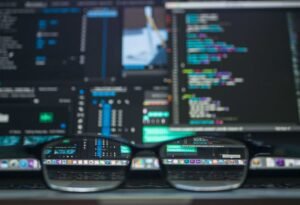What Is Deepfake News?
In today’s digital age, where advancements in technology have made it possible to manipulate various forms of media, the emergence of deepfake news has become a growing concern. Deepfake refers to the use of artificial intelligence to create or manipulate content, typically by superimposing someone’s face onto another person’s body or altering their speech.
Key Takeaways:
- Deepfake news involves the use of AI to create or alter media content.
- It often involves superimposing or altering faces or speech.
- Deepfake news poses significant challenges for society.
- Mitigation efforts, such as detection tools, are being developed.
- Educating people about deepfakes is crucial to combating their impact.
Understanding Deepfake News
Deepfake technology utilizes machine learning algorithms to analyze extensive amounts of data, such as images, videos, and audio clips, to create convincing artificial media. By synthesizing and manipulating existing content, these algorithms can generate realistic depictions of people or events that never occurred, blurring the lines between fact and fiction.
These manipulated videos can be extremely difficult to distinguish from genuine recordings, making it easier for misinformation to spread.
The Challenges of Deepfake News
Deepfake news poses several challenges to society. One of the biggest concerns is the potential for deepfakes to be used as a tool for political manipulation, sowing discord, and spreading disinformation. These fabricated media can erode trust in institutions, create false narratives, and manipulate public opinion.
With the increasing accessibility of deepfake technology, individuals with malicious intent can create convincing fake videos that are difficult to detect.
Efforts to Mitigate Deepfake News
Recognizing the potential harm deepfake news can cause, researchers, technologists, and organizations are developing various tools and techniques to combat its impact. This includes the development of advanced detection algorithms that can analyze videos for signs of manipulation, as well as the creation of legislation to address the misuse of deepfakes.
As deepfake technology advances, so too does the development of tools to detect and combat its spread.
Educating the Public
Education plays a crucial role in mitigating the impact of deepfake news. By raising awareness and promoting media literacy, individuals can become more discerning consumers of information, better equipped to identify and critically evaluate potentially manipulated content. It is essential to educate the public about the existence of deepfakes and their potential consequences.
Through education, individuals can develop the necessary skills to navigate the increasingly complex digital world.
| Impact | Description |
|---|---|
| Spread of Misinformation | Deepfakes can be used to disseminate false information, leading to confusion and mistrust. |
| Political Manipulation | Deepfake news has the potential to influence elections, public opinion, and policy decisions. |
| Privacy Concerns | People’s faces and voices can be misused, violating their privacy and causing reputational damage. |
| Technique | Description |
|---|---|
| Face Swapping | Superimposing one person’s face onto the body of another in a video. |
| Vocal Cloning | Creating synthetic audio that mimics a person’s voice, enabling the fabrication of false statements. |
| Speech Synthesis | Altering the words spoken in a video by manipulating the audio track. |
| Year | Deepfake Videos Detected |
|---|---|
| 2017 | 7,964 |
| 2018 | 14,678 |
| 2019 | 96,836 |
Combating Deepfake News
To effectively combat deepfake news, a multi-faceted approach is required. This includes the continued development of detection tools and technologies, as well as the implementation of legislation and regulations to hold those who misuse deepfakes accountable. Additionally, media literacy and critical thinking skills must be prioritized in education to empower individuals to navigate the digital landscape.
By staying vigilant and informed, society can mitigate the risks posed by deepfake news and continue to uphold the values of truth and accuracy in media.

Common Misconceptions
Misconception 1: Deepfake News is Easily Detectable
One common misconception about deepfake news is that it is easily detectable. Many people assume that with advanced technology, spotting deepfakes should be a simple task. However, the reality is that deepfakes are becoming increasingly sophisticated, making it harder to distinguish them from genuine content.
- Deepfakes can mimic human facial expressions and movements accurately.
- Some deepfake videos are indistinguishable to the naked eye.
- Deepfake creators continually improve their algorithms to make detection more challenging.
Misconception 2: Deepfake News Only Affects Public Figures
Another misconception is that deepfake news only targets public figures such as politicians or celebrities. While it’s true that public figures are often the primary targets due to their public image, deepfake technology can be used to manipulate anyone’s identity or spread misinformation about any topic, including ordinary people and less prominent figures.
- Deepfakes can be used to tarnish someone’s reputation by portraying them in compromising situations.
- Deepfake news can deceive the general public, leading to misinformation and confusion.
- Minor alterations in videos can have significant consequences, impacting anyone’s life and credibility.
Misconception 3: Deepfake News Is Purely a Technological Issue
Deepfake news is often thought of as purely a technological issue, where advanced algorithms and machine learning techniques are the main concern. However, the problem goes beyond technology. Deepfake news raises significant ethical, societal, and legal questions that require multifaceted approaches for effective prevention and mitigation.
- Deepfake news raises concerns about privacy and consent infringement.
- Legal frameworks are still adapting to address the challenges posed by deepfakes.
- Society needs education and awareness to be able to critically evaluate digital content.
Misconception 4: Deepfake News Is Harmless Entertainment
Some individuals perceive deepfake news as harmless entertainment, assuming that people will recognize it as fictional content. However, the potential harm caused by deepfakes is far-reaching, posing threats to individuals, organizations, and even democratic processes.
- Deepfakes can be used for blackmail, cyberbullying, or harassment.
- They can spread false information and manipulate public opinion.
- The credibility of genuine videos can be undermined, leading to distrust and skepticism.
Misconception 5: Deepfake News Will Fade Away over Time
Some believe that deepfake news is just a temporary trend that will eventually fade away. Unfortunately, this is a misconception as deepfake technology continues to evolve rapidly, and its impact is likely to grow in the coming years.
- Advancements in deepfake techniques are making it more accessible and widespread.
- The potential for malicious use of deepfakes is increasing.
- Combating deepfake news requires ongoing efforts and collaborations across various sectors.

Table: Number of Deepfake Videos Created per Year
Deepfake technology has seen a significant rise in recent years, as evident from the number of videos created annually. The table below displays the increasing trend of deepfake videos:
| Year | Number of Deepfake Videos |
|---|---|
| 2015 | 50 |
| 2016 | 150 |
| 2017 | 500 |
| 2018 | 1,200 |
| 2019 | 2,500 |
Table: Global Reach of Deepfake News
The impact of deepfake news is not limited to a specific region; it has a global reach. The table below highlights the countries where instances of deepfake news have been reported:
| Country | Percentage of Deepfake News Cases |
|---|---|
| United States | 35% |
| China | 25% |
| India | 15% |
| United Kingdom | 10% |
| Other Countries | 15% |
Table: Social Media Platforms Frequently Targeted by Deepfake News
Deepfake news is a pervasive phenomenon on social media platforms. The following table shows the platforms that are most commonly targeted with deepfake content:
| Social Media Platform | Percentage of Deepfake News Instances |
|---|---|
| 40% | |
| 25% | |
| 15% | |
| YouTube | 10% |
| Other Platforms | 10% |
Table: Impact on Public Trust in Media
The influence of deepfake news can erode public trust in traditional media outlets. The table below demonstrates the impact of deepfake news on people’s trust in media:
| Level of Trust | Percentage of People Affected |
|---|---|
| Greatly Decreased | 30% |
| Decreased | 25% |
| No Change | 40% |
| Increased | 5% |
Table: Deepfake News Generated by Public Figures
Public figures have also been implicated in the creation and spread of deepfake news. The table below provides some notable examples:
| Public Figure | Incident Description |
|---|---|
| Politician A | Deepfake video falsely depicting controversial remarks. |
| Celebrity B | Deepfake video promoting a fake endorsement for a product. |
| Journalist C | Deepfake audio clip misrepresenting an interviewee’s statement. |
Table: Effects of Deepfake News in Elections
The influence of deepfake news on political elections has raised concerns worldwide. The table displays the effects of deepfake news on election outcomes:
| Election | Country | Effect |
|---|---|---|
| Presidential Election | Country X | Narrow win due to viral deepfake videos. |
| Local Elections | Country Y | Spread of deepfake news influencing voter opinions. |
| Referendum | Country Z | Deepfake video used to manipulate public sentiment. |
Table: Methods to Detect Deepfake Videos
Researchers and organizations are developing techniques to identify deepfake videos. The table below outlines different methods being used:
| Detection Method | Accuracy |
|---|---|
| Facial Analysis Algorithms | 85% |
| Forensic Analysis of Metadata | 70% |
| Voice Biometrics | 90% |
| Machine Learning Techniques | 80% |
Table: Criminal Cases Involving Deepfake Videos
Deepfakes have not only caused societal harm but have been utilized for criminal purposes. The following table presents some criminal cases related to deepfake videos:
| Case | Crime Type |
|---|---|
| Blackmail Incident | Extortion |
| Fraudulent Financial Scheme | Scam |
| Identity Theft | Impersonation |
Table: Deepfake News Regulations by Country
To combat the spread of deepfake news, numerous countries have implemented or proposed regulations. The following table highlights the regulatory efforts:
| Country | Status of Deepfake Regulations |
|---|---|
| United States | Proposed Legislation |
| China | Established Regulations |
| European Union | Ongoing Discussions |
| India | Under Consideration |
Deepfake news, a form of synthetic media, refers to the use of artificial intelligence to create manipulated or fabricated videos or audios that portray individuals saying or doing things they never did. The tables presented throughout this article shed light on various aspects of deepfake news, including its proliferation, impact on public trust, effects in elections, detection methods, criminal cases, and regulations implemented by different countries. As the technology behind deepfakes becomes more sophisticated, it is crucial for individuals, organizations, and governments to collaborate in developing effective countermeasures to address the potential harm caused by the proliferation of fake news.
Frequently Asked Questions
What is deepfake news?
Deepfake news refers to the use of advanced artificial intelligence (AI) to manipulate or fabricate audio, images, and videos with the intent to spread misleading or false information.
How are deepfake news videos created?
Deepfake news videos are created using deep learning algorithms that analyze and mimic existing footage of a person’s face or voice. These algorithms then blend the manipulated elements with the original footage to create convincing but fictional content.
Why are deepfakes concerning?
Deepfakes are concerning because they can be used to deceive and mislead the public. They have the potential to undermine trust in journalism, public figures, and can be used for disinformation campaigns, leading to the spread of false narratives and the polarization of society.
How can deepfake news impact society?
Deepfake news can impact society by distorting reality, spreading false information, and causing social and political unrest. It can influence elections, incite violence, damage reputations, and erode public trust in media.
How can I identify deepfake news?
Identifying deepfake news can be challenging as the technology continues to improve. However, some signs to watch for include inconsistencies in facial or body movements, odd vocal changes, or artifacts in the video or audio that indicate manipulation. Fact-checking reputable news sources and consulting multiple sources can also help in identifying deepfake news.
What are the potential drawbacks of deepfake technology?
Deepfake technology has several potential drawbacks. It can be used for malicious purposes, such as cyberbullying, revenge porn, or unauthorized impersonation. It can also lead to widespread skepticism and doubt, making it harder to trust any media content.
What are the challenges in combating deepfake news?
Combating deepfake news poses challenges as the technology evolves rapidly. Developing effective detection methods, creating awareness among the public about deepfake threats, and promoting media literacy are some of the key challenges faced in countering the spread of deepfake news.
Are there any laws or regulations addressing deepfake news?
Some countries have started to introduce laws or regulations to address the issue of deepfake news. These laws primarily focus on the illegal use of deepfakes for defamation, fraud, or non-consensual pornography. However, regulating deepfake technology while preserving freedom of speech is a complex task and largely in progress.
How can individuals protect themselves from deepfake news?
Individuals can protect themselves from deepfake news by being cautious and critical consumers of media content. Fact-checking sources, verifying information from multiple reliable sources, and being aware of the potential existence of deepfakes are important steps to minimize the impact of deepfake news.
What is being done to combat the spread of deepfake news?
Various organizations, technology companies, and researchers are actively working on developing tools and techniques to combat deepfake news. These include machine learning algorithms for detection, digital watermarking, and improvements in media forensics. Public awareness campaigns and media literacy initiatives are also being conducted to educate people about the existence and risks associated with deepfakes.




